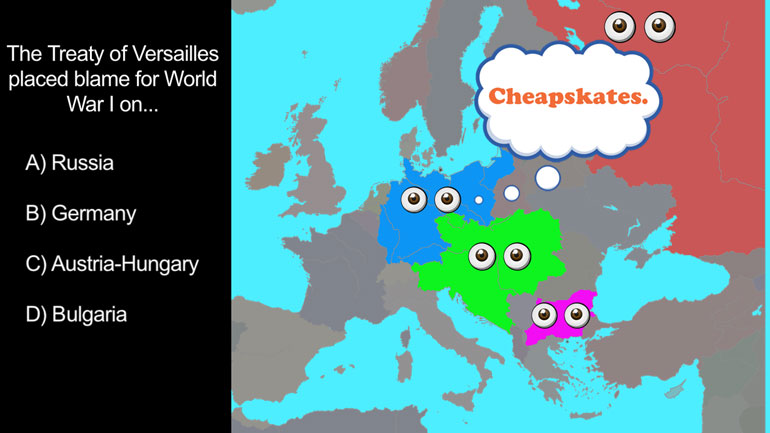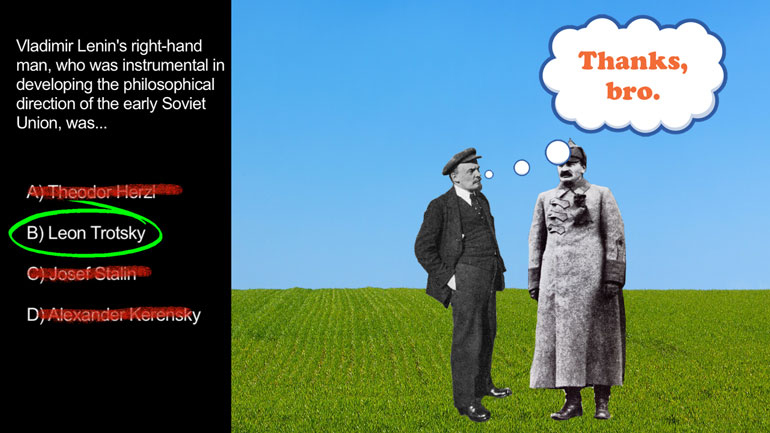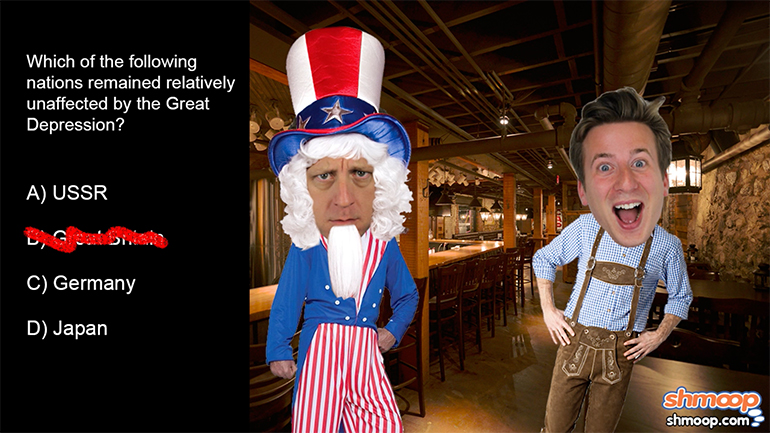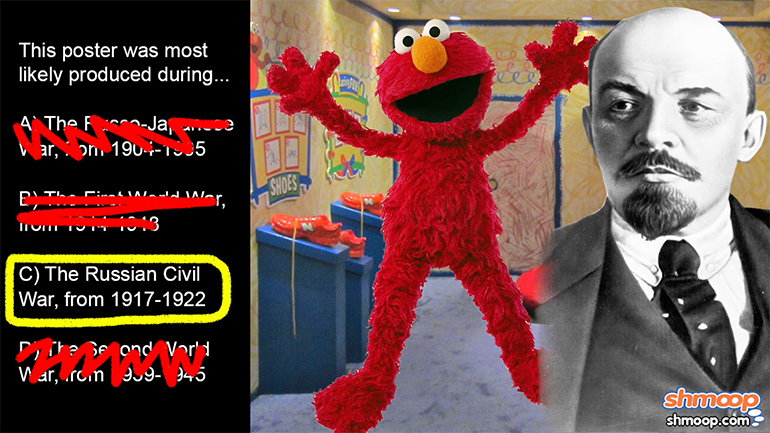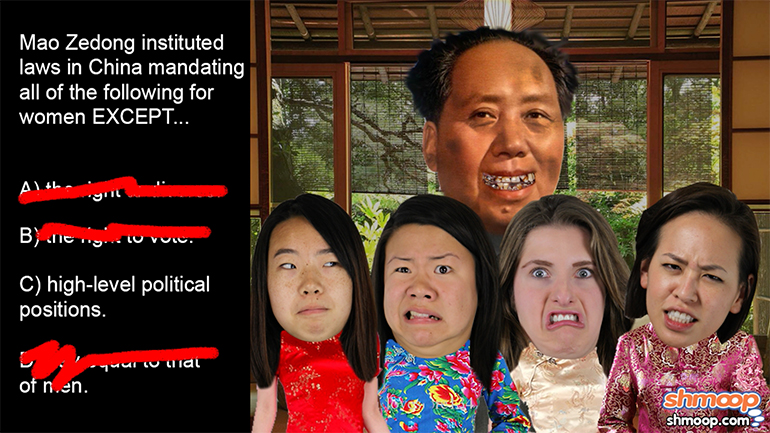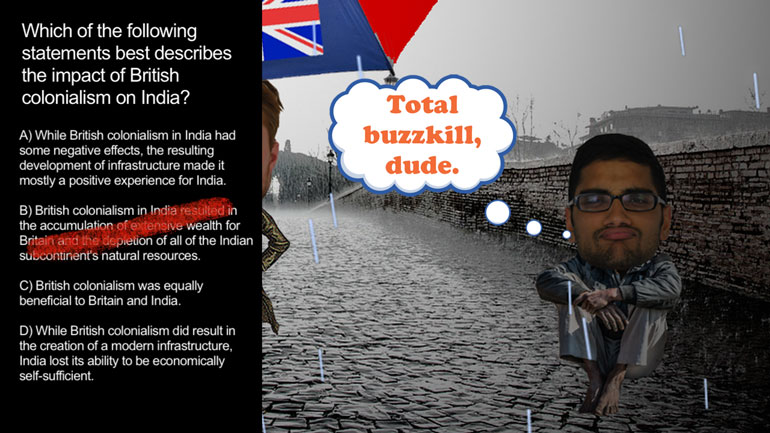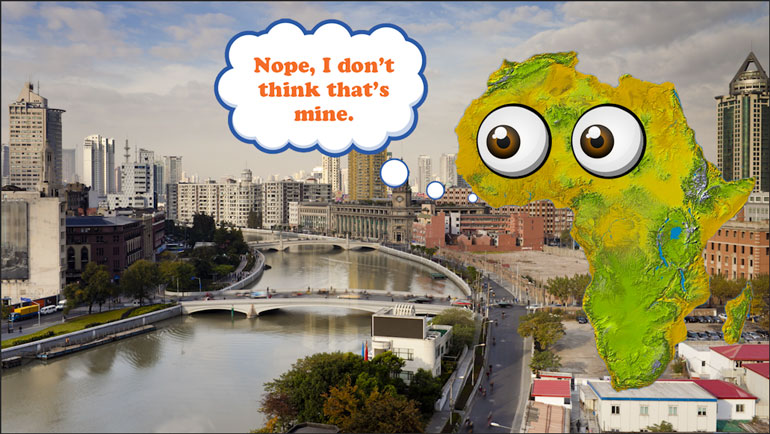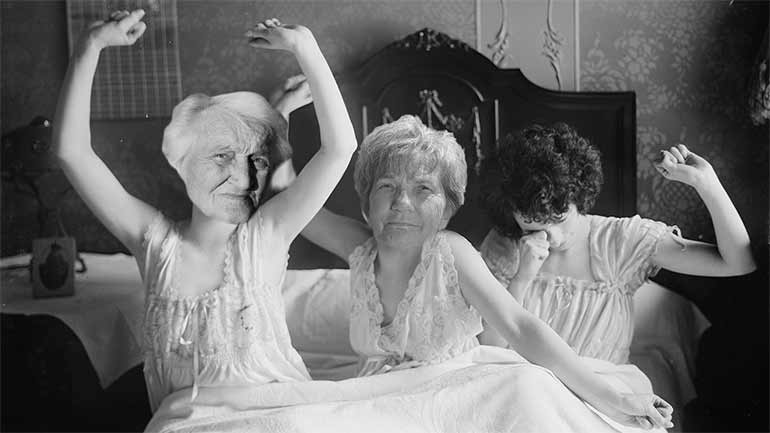ShmoopTube
Where Monty Python meets your 10th grade teacher.
Search Thousands of Shmoop Videos
AP World History Videos
Play All
AP World History 1.2 Industrialization and Global Integration, c. 1750 to c. 1900. All of the following are innovations of the Industrial Revolutio...
AP World History 2.5 Industrialization and Global Integration, c. 1750 to c.1900. What was the relationship between abolitionist movements and wome...
AP World History 3.2 Industrialization and Global Integration, c. 1750 to c. 1900. The Sepoy Mutiny resulted in...what?
AP World History 4.3 Industrialization and Global Integration, c. 1750 to c. 1900. What was the immediate cause of the First Sino-Japanese War?
AP World History 1.1 Accelerating Global Change and Realignments, c. 1900 to Present. The Treaty of Versailles placed blame for World War I on...wh...
AP World History 1.2 Accelerating Global Change and Realignments, c. 1900 to Present. Vladimir Lenin's right-hand man, who was instrumental in deve...
AP World History 1.3 Accelerating Global Change and Realignments, c. 1900 to Present. Mustafa Kemal is responsible for...what?
AP World History 1.4 Accelerating Global Change and Realignments, c. 1900 to Present. Which of the following nations remained relatively unaffected...
AP World History 1.5 Accelerating Global Change and Realignments, c. 1900 to Present. During the Great Depression, South Africa experienced an unex...
AP World History 1.5 Industrialization and Global Integration, c. 1750 to c. 1900. Which of the following statements best describes the compensatio...
AP World History 2.1 Accelerating Global Change and Realignments, c. 1900 to Present. This poster was most likely produced during...what?
AP World History 2.2 Accelerating Global Change and Realignments, c. 1900 to Present. Mao Zedong instituted laws in China mandating all of the foll...
AP World History 2.4 Accelerating Global Change and Realignments, c. 1900 to Present. Which of the following statements best describes the impact o...
AP World History 2.4 Industrialization and Global Integration, c. 1750 to c. 1900. Which of these nations was the most enthusiastic advocate for th...
AP World History 2.5 Accelerating Global Change and Realignments, c. 1900 to Present. What do many historians believe caused the failure of the Lea...
AP World History 3.1 Industrialization and Global Integration, c. 1750 to c. 1900. The 1869 construction of which important canal drastically chang...
AP World History 4.1 Industrialization and Global Integration, c. 1750 to c. 1900. During the Tokugawa reign in Japan, political power lay with...w...
AP World History 4.4 Industrialization and Global Integration, c. 1750 to c. 1900. The deterrent that made a full-scale inland invasion of Africa n...
AP World History 4.2 Industrialization and Global Integration, c. 1750 to c. 1900. Which of the following best explains the rise of global inequali...
AP World History 4.5 Industrialization and Global Integration, c. 1750 to c. 1900. Which country colonized Indonesia?
AP World History 4.2 Technological and Environmental Transformations, to c. 600 B.C.E. What was a major difference between the ways that the ancient Chinese and Egyptians viewed their rulers?
AP World History 3.4 Industrialization and Global Integration, c. 1750 to c. 1900. Based on GDP, the wealthiest country in the world in the year 1900 was...what?
AP World History 2.2 Industrialization and Global Integration, c. 1750 to c. 1900. The British responded to the Chinese lack of interest in trade by...what?
AP World History 2.3 Industrialization and Global Integration, c. 1750 to c. 1900. Which was the first Latin American nation to achieve independence from Europe?
AP World History 3.3 Industrialization and Global Integration, c. 1750 to c. 1900. Australia was colonized by the British for...what?
AP World History 4.4 Technological and Environmental Transformations, to c. 600 B.C.E. Which of the following is an advantage that Bronze-age plow agriculture had over slash-and-burn?
AP World History 3.2 Technological and Environmental Transformations, to c. 600 B.C.E. Which of the following best describes the social structure of Mesopotamian civilization?
AP World History 3.4 Technological and Environmental Transformations, to c. 600 B.C.E. The Epic of Gilgamesh is important as a historical document because it is...what?




